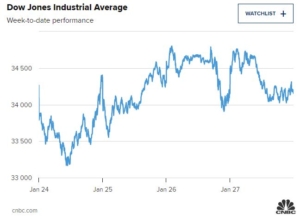Why We Could See a Short Term Rally (But We Wouldn’t Chase It)
What’s in Today’s Report:
- Why We Could See a Short-Term Rally
- What the FOMC Minutes Meant for Markets (Not as Hawkish as Feared, But Not Dovish, Either)
- EIA and Oil Market Update
Futures are modestly weaker as negative headlines on Russia/Ukraine weighed on sentiment.
Russia accused Ukraine of attacking Russian-back separatists in the Dontesk region of Ukraine, and analysts fear this could be the pretext for a larger military conflict if Russia moves to annex Dontesk, (this would be a replay of what happened with Crimea in 2014).
Russia/Ukraine headlines are driving short term trading and that will remain the case today, with any headlines implying diplomacy causing a rally, and any headlines implying conflict causing a sell off.
Beyond geopolitics, however, we get several pieces of economic data, including Jobless Claims (E: 224K), Housing Starts (E: 1.708M) and the Philadelphia Fed Manufacturing Index (E: 19.7) and as has been the case the market will be looking for stability in the data.
Finally, we also get two Fed speakers, Bullard (again) at 11:00 a.m. ET and Mester at 5:00 p.m. ET.
